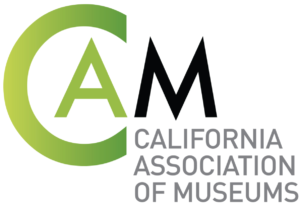 Moderator and Panelists
Moderator and Panelists
James McNamara spoke as part of a panel, moderated by Joan G. Cumming, Senior Director of Marketing and Communications at the Autry National Center. Carol D. Martin, Principal at Martin & Stowe Research, a cultural arts research firm, and Irina Zadov, Director of Experience and Programs at the Children’s Creativity Museum spoke as well.
Topics
We discussed the importance of vertical arts brand integration throughout museums today and the significance a brand has in attracting new visitors and gaining community and donor support. We presented illustrations of brand characteristics that help differentiate institutions, and presented basic steps that create the foundation for brand discovery and development; including articulating core value and core purpose, and the role research contributes to brand development. Work and planning that the Children’s Creativity Museum undertook was presented as a detailed case study.
What Do You Think?
So, what do you think? Does branding still matter in helping you increase attendance and garner support for your organization? Keep in mind I’m not looking for tactics you’ve used in marketing, development, or outreach; or specific exhibitions or programs that have helped your organization’s image (though these are all critical).
I’m looking for the big picture. How does your organization’s overall image, whether through messages, visuals, or both, help drive interest and attendance from new visitors? How does your organization’s brand (the collective touchpoints that people have with your organization discussed in previous essays) impact who supports your organization and what makes them want to support it more?
To Get You Started
To get you thinking, here’s three reasons why branding should still matter to arts organizations. More importantly, your comments are vital as to why you think branding should still matter:
-
A Resonating Image. An effective brand strategy process questions assumptions about how your cultural organization is perceived and how you want it to be perceived. It asks about negative and misperceptions. And it provides recommendations on how to address and resolve these. The net result is simply communicating the right aspects about your organization that will resonate most with new visitors/attendees and supporters of all types.
-
Guidance vs. Control. In our business there’s the adage that, “if you don’t manage your brand, others will do it for you.” We often add, “and they’ll do it badly.” But are people and their perceptions really wrong? Aren’t perceptions reality? The answer is sort of. In the era of social media, where creating dialogs with audiences is paramount, it’s true that we must cede some control of our brands and to a certain extent let people decide how our brands will evolve. That said, we should still be the guiding force that our cultural brands need us to be by continuing to promote the messages and visual image we want for our organizations, and that we hope and often know, will attract visitors/attendees and supporters.
-
Decision-Making Touchstone. Continuing this theme of overused adages, one of my favorites is, “if you don’t know where you’re going, any road will get you there.” A well-crafted brand strategy can and should be used as touchstone for decision-making among cultural arts managers. So, when we sit down to discuss those tactics that I mentioned at the start of this essay, such as a new initiative, a new program, a new exhibition, or a new promotional or fundraising idea, the discussion should follow on how these ideas fit with your mission, vision, values, and position within the marketplace (a pivotal part of a brand strategy). And, most importantly, how effective the tactic be in reaching our desired audiences and supporters in spurring them on from awareness to interest to action. This takes the discussion away from merely implementing a “really cool idea.”
So there you go. Have fun with this. we look forward to reading your responses — and having you read your responses —on why and how branding still matters within your cultural arts organizations. Thanks!
 Moderator and Panelists
Moderator and Panelists
